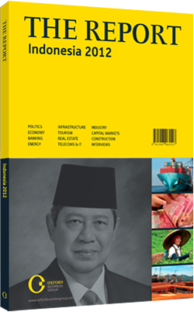Easing congestion: Getting traffic moving in the Jabodetabek area
Traffic in the Greater Jakarta region is increasingly slowing down, as the number of vehicles on the roads rise. In 2010 there were 11.3m vehicles in the metropolitan priority area of Jabodetabek (Greater Jakarta), with 1.5m of these in Jakarta alone, according to the Ministry of Transport. The majority of these are two- or three-wheelers weaving their way through traffic.
GRIDLOCK: Streets only account for roughly 6% of Jakarta’s landmass, far less than the 15% or so in comparable cities of Tokyo, New York or Singapore. Current growth trends suggest that Jakarta will reach total gridlock by 2014 – traffic already moves at a mere 8 mph on average, compared to London’s 12 mph.
Private motorised vehicles still account for more than 70% of all journeys in the Greater Jakarta area – and the proportion of journeys using public transport is dropping. The state-owned Kereta Api Indonesia (KAI) runs a subsidiary for commuter train services in the Jabodetabek area but it has proved woefully inadequate to meet the needs of the city’s commuters. The TransJakarta bus system, to which exclusive bus lanes have been converted, has sped up bus journeys somewhat since opening in 2004 but has tended to make traffic worst by narrowing surrounding artery roads.
The government says it loses $3bn a year due to traffic delays, prompting a recent proposal to relocate the capital to elsewhere in Java. The added logistical cost of traffic delays has contributed to ranking Jakarta among the world’s 10 most expensive capital cities in Asia in 2010, according to the Indonesia Infrastructure Initiative, an Australian-funded project.
DRASTIC PLANS: In 2011 Vice-President Boediono took charge of the situation with a 17-point plan to cut traffic. Measures include electronic tax collection, fuel premiums for private vehicles, parking charges and expanding bus lanes. Congestion charging would replace the current “3 in 1” system, whereby every car excluding taxis must have three passengers at peak hours on key congested roads in Jakarta. Critics doubt the effectiveness of some measures, however, as many cars not registered to their current owners and fuel surcharges are likely to be only a minor disincentive.
To overcome past implementation challenges, the government set up a dedicated Transport Authority (TA) for the Jabodetabek area in early 2011, an organisation supported by Japan International Cooperation Agency (JICA) that will steer the development of a multi-modal transport system, complete with commuter trains, buses, an airport link and a subway. This move is supported by the private sector, which has long called for a more comprehensive transport system and better management of infrastructure projects. “Jakarta’s traffic challenges cannot be solved with a single solution, but rather by providing higher-quality larger-capacity systems such as articulated buses, as well as a high volume of feeder buses,” Claus Weidner, the president director of Mercedes Benz Indonesia, told OBG.
MASS TRANSIT: The pilot project for mass rapid transit (MRT) private rail concessions in Java is the elevated railway from the south-Jakarta station Manggarai near Jl Sudirman to Soekarno-Hatta airport (the Soeta rail link), offered to investors in April 2011. Land acquisition for the 33-km elevated train, running via Angke and Pluit, will begin in 2011 with a first-year budget allocation of Rp450bn ($54m). The total project is expected to cost $700m and is being tendered in 2011 on a build-operate-transfer (BOT) basis. The government is co-financing the project to the tune of Rp1.5trn ($180m) in land and Rp1.7trn ($204m) in construction costs. Leading investors, such as India’s Reliance ADA Group, have expressed interest in the project. Meanwhile, the extension of the KRL system, Jabodetabek’s MRT network of commuter trains is being planned, with construction set to start in 2012 on nine new stations that will interconnect with the TransJakarta bus system.
These networks will require land acquisition rules that speed up project development and meet deadlines set for 2016. Furthermore, to avoid total gridlock, authorities are hoping to expand the TransJakarta bus lanes and increase the frequency of commuter trains.
You have reached the limit of premium articles you can view for free.
Choose from the options below to purchase print or digital editions of our Reports. You can also purchase a website subscription giving you unlimited access to all of our Reports online for 12 months.
If you have already purchased this Report or have a website subscription, please login to continue.

